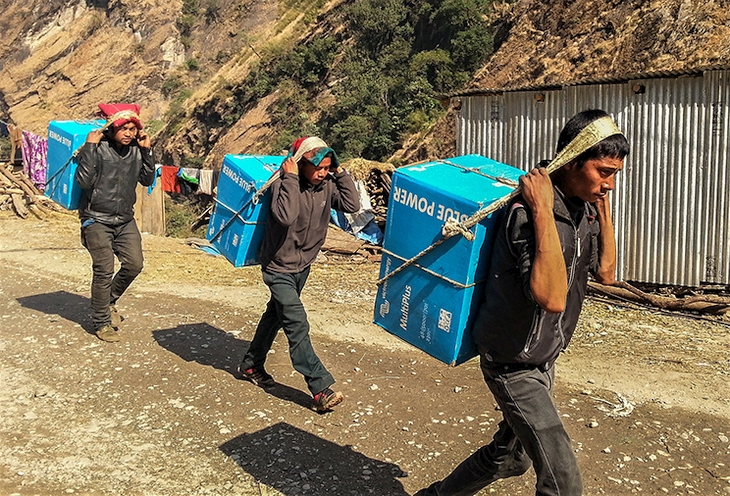
I’m very much looking forward to Justin’s next blog installment (about his Victron powered off-grid Straw Bale home) when he plans to open the Victron boxes and carry on with equipment installation. In the meantime I just received email about another fascinating off-grid project. The clue is in the headline image. What a contrast!
The Tyers family had a shiny courier van deliver all their equipment direct to their doorstep and home, where they could open the boxes amidst wood burning stove warmth. Maybe Justin & Linda have it easy after all – just imagine instead carrying 3 x 30Kg Victron Mutiplus inverter/chargers up a 2,000 m mountain before even beginning to read the manuals…
That is what it takes for the aptly named, Kathmandu based company, Peak Power just to deliver some of their project equipment to site. On that breathless note I’ll let guest blogger Joel Basham, Managing Director, of Peak Power Pvt. Ltd. take up their story.
John Rushworth

Simigoan
Simigoan is a village in the Nepal Himalaya, at around 2,000 metres elevation. It is situated above the Tama Koshi River along the trekking route to the Gaurishankar base camp; a common route and area that is used by mountaineers to practice and train before tackling serious climbs. The locals believe that the village was established when nomadic people from the ‘Tibetan side’ crossed over into Nepal to hunt in the rich valleys, and on the way dropped some of the dried beans they carried for food. On the return they found the beans (simi) had grown into a thriving field of bean plants, so their ancestors decided to settle and establish the village (goan).
Today Simigoan is a small village of Sherpa and Tamang peoples, just a few of the many ethnic groups in Nepal. Here people earn a living from guiding, climbing or hauling during the trekking season, some operate small guest houses for the tourists going in and out of the GS base camp. Others have sons and daughters abroad in countries like Qatar and UAE who work as construction workers, nannies and maids.
Everyone in Simigoan is a farmer and tends their own fields. Life here is tough, with no roads; everything must be carried up and down, but it is also simple, peaceful, and beautiful. The food is naturally organic, the water is pure spring water, and there is a wonderful absence of screens and distractions, life is very eco-friendly.
Earthquake
Back in 2007 the village installed a micro-hydro; they connected up around 120 households to power lights and key appliances in the community, clinic and school. There is around 1.5 kilometres of aerial cable traversing the village to distribute the 3 phases everywhere. Over the years, the system has degraded and the village turns on the power only at night, as it no longer does the job that the village needs.
The 2015 earthquake hit the village pretty hard, most of the buildings collapsed, the tourists stopped coming, and the only clinic in the village collapsed with the stone and concrete walls destroying the equipment. The brand new school, which had literally just been completed, collapsed during the inauguration event. Luckily everyone had gone for lunch when the earthquake struck, so no one was injured. The micro-hydro still worked, but significant repairs needed to be carried out.
More than a year later, the village is getting back on its feet. People are reconstructing with new earthquake withstanding techniques, the school has been rebuilt entirely and a temporary clinic has also been rebuilt. The hydro is back on, but is providing power at night-time only.
Microgrid
To supplement the village electrification program, a 3 phase solar system with battery backup was planned which would feed in power during the day and support the micro-hydro at night.
This system was designed and executed by Peak Power, a local renewable energy specialist and Victron Energy partner based in Kathmandu. Peak Power designed and installed a three phase inverter stack using three 5 KVA Victron Multiplus inverter/chargers along with two MPPT charge controllers, 600 Ah of AGM batteries and 7 kWp of Trina Solar PV modules. The system has a BMV-702 and Color Control GX for management and system control.
Logistics & commissioning
Logistically the install was challenging, everything needed to be carried from the access road and trail head to the village, which is 3 hours of non-stop up.
A new building to accommodate the system components and batteries needed to be constructed, significant changes had to be made to the distribution network with new poles and overhead conductors, which were changed to rectify some design mistakes with the hydro. Now the voltage drop is within tolerances.
The system was installed in early January 2017 but the official commissioning and startup happened late in January. The village now has power during the day and night by having an energy mix of solar and hydro which gives them additional resilience to catastrophic events such as extreme weather and earthquakes.
With the trekking season about to kick off again for 2017 the village once again is looking forward to welcoming back guests – and we trust to more and much deserved prosperity.
Joel Basham
Peak Power Pvt. Ltd. , Kathmandu, Nepal.






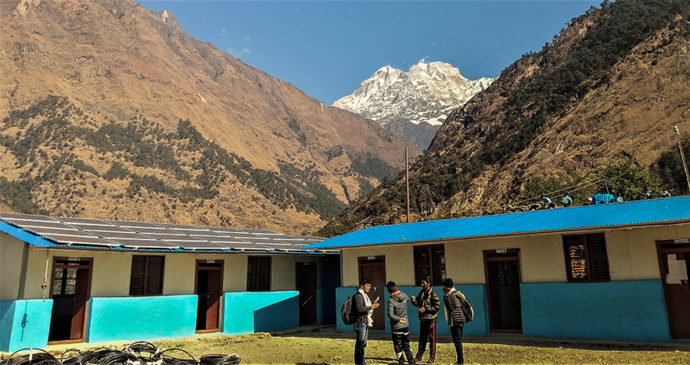
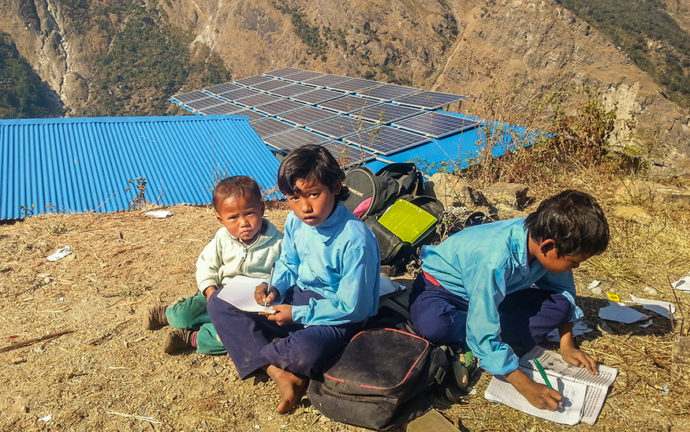
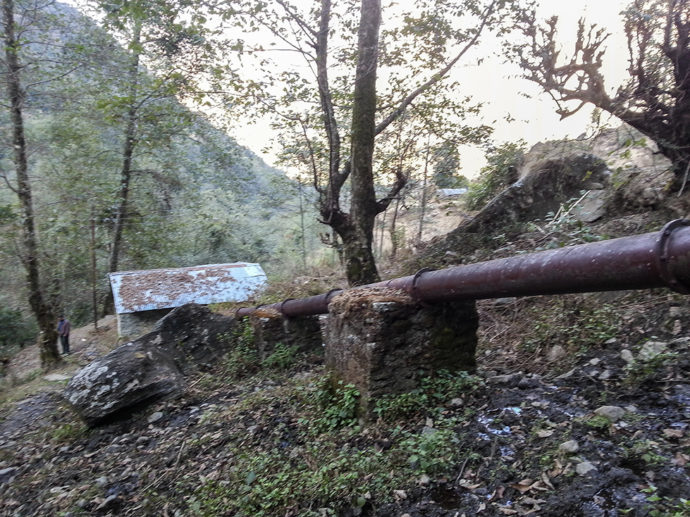
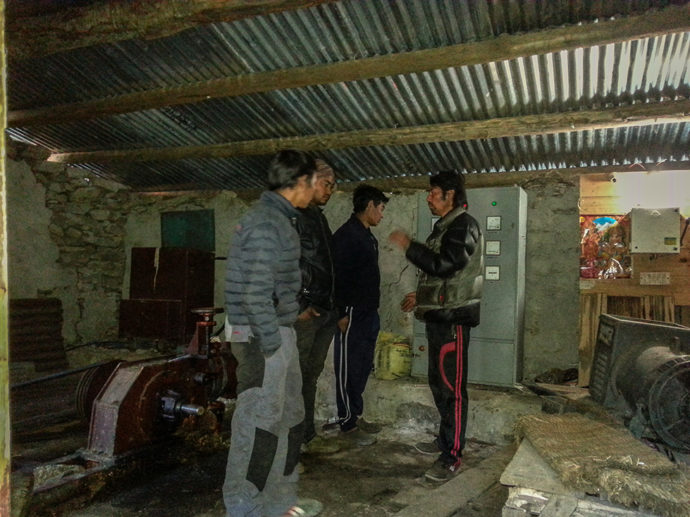
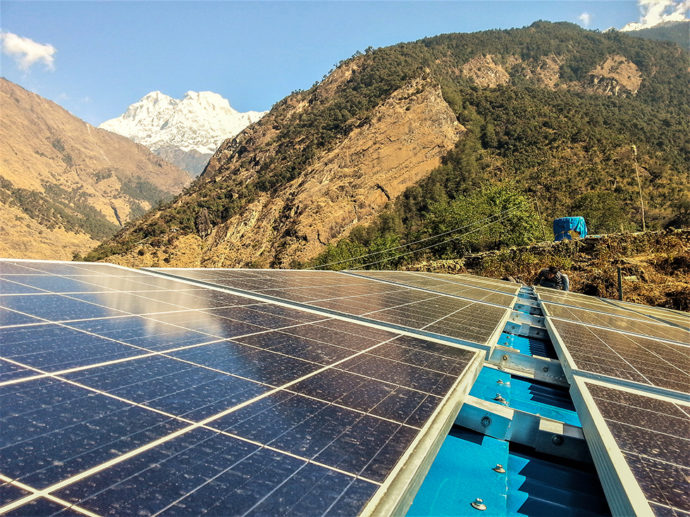
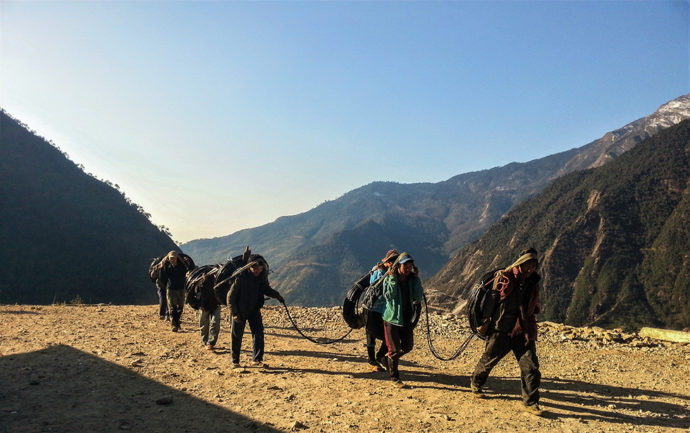
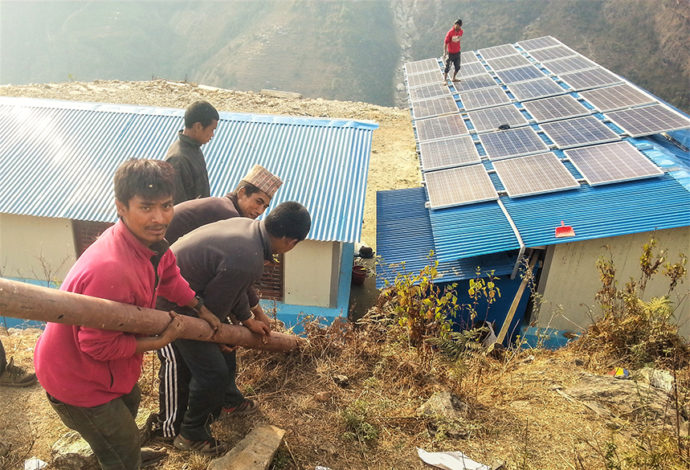
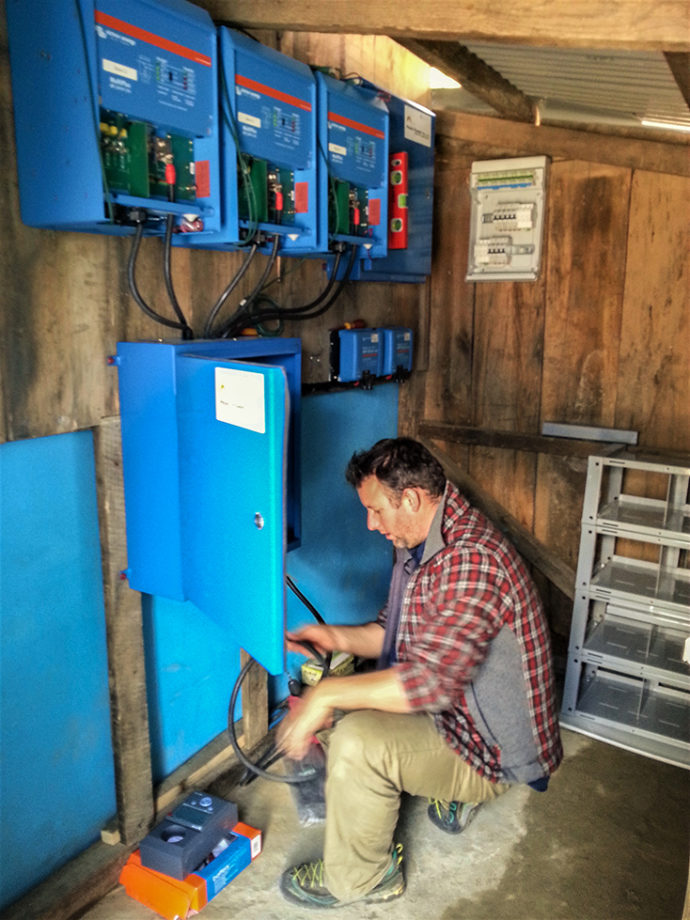
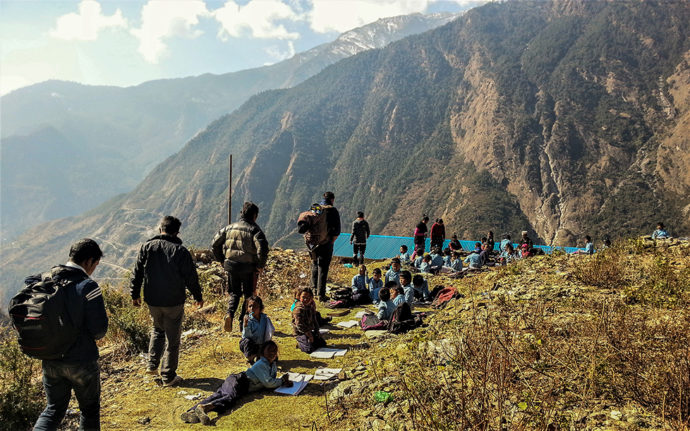













 #victronenergy #adventure
#victronenergy #adventure
 ELECTRICS
ELECTRICS 
